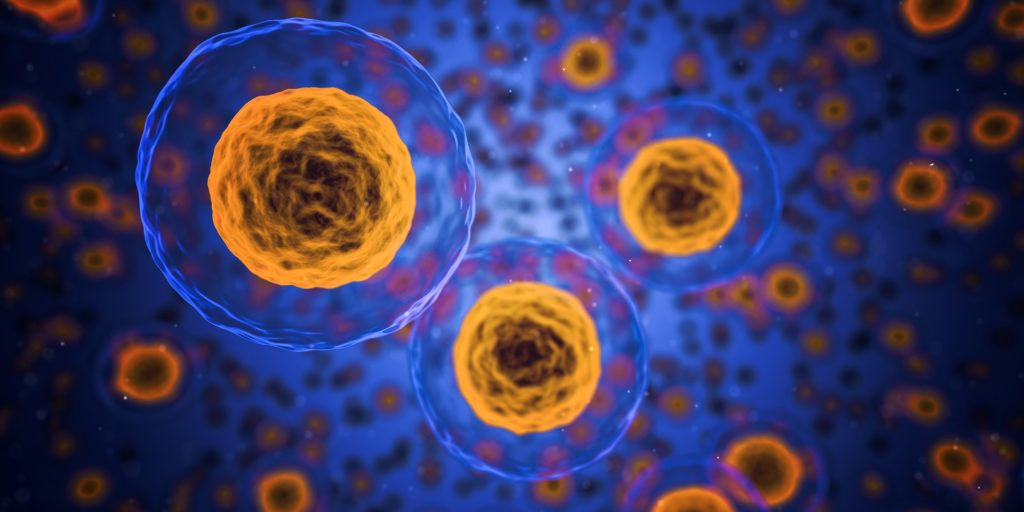TECHNOLOGY
NDCt GIVES CONTROL OVER THE COMPOUND
We chemically attach a nutrient mimic via a linker to the drug. The linker has profound effects on transport and synthesis.
The nutrient mimic is a transporter substrate – recognized by the intestinal wall – facilitating active transport (vs passive transport of old-fashioned drugs).
Subsequent enzymatic cleavage in the bloodstream, liberating the drug.
With our patented NDCt we address the full spectrum of issues around oral bioavailability and control the compound.
Nutrients are absorbed easily and in relatively large quantities on a daily basis, despite their far from optimal physicochemical properties. The difference with oral uptake of small-molecule-type drugs is that nutrients can make use of specific transporter proteins to facilitate intestinal membrane passage, whereas most drugs rely on passive diffusion. There are many families of intestinal transporter proteins, some of which have a high transport capacity.
PharmaCytics has developed its Nutrient-Drug Conjugate technology (NDCt) as one of its advanced prodrug approaches which exploits intestinal transporter proteins to enhance oral uptake of small-molecule drugs. The NDC technology can be regarded as a tripartite prodrug approach in which a transporter substrate is applied as a carrier. A critical element is the linker, utilized as an interface to connect the carrier to the drug. The conjugate is designed such that it remains stable prior to and during transport, whereas rapid hydrolysis occurs following membrane passage to provide the active drug. The NDC technology has already shown to be very effective. In pharmacokinetic studies we have achieved enhancement of oral bioavailability of several drugs by a factor 7-8.
Efficient uptake of oral drugs is frequently hampered by various issues, including low solubility and/or low permeability of the drugs, a high degree of intestinal metabolism or high efflux rates from the intestinal membrane.
Absorption of most oral drugs rely on passive diffusion through the intestinal membranes. The efficacy of this passive diffusion process is strongly depending on the physicochemical properties of the drug. These properties are not always optimal and therefore, a variety of technologies have been developed to improve on the bioavailability of oral drugs. One of these approaches is the use of prodrugs.

PROVIDING THE MISSING LINK
PharmaCytics developed a toolbox of proprietary linkers and nutrient mimics.
With our bifunctional linker variants it is even possible to couple drugs to biomolecules, such as proteins and antibodies.
In addition, our linker technology can produce mutual prodrugs (or codrugs) in which two different synergistic acting pharmacological agents are linked together.
Prodrugs are transiently modified variants of therapeutic agents, designed to improve the pharmacokinetics profile or to alter/eliminate undesirable properties of the parent drug. Within a prodrug, pharmacological activity of the drug is usually masked. Recovery of the active drug is achieved within the human body upon bioconversion of the prodrug. This process is typically mediated by enzymes. The prodrug approach has proven to be very successful. Approximately 10% of all marketed drugs worldwide can be considered prodrugs. Since 2008, at least 30 prodrugs have been approved by the regulatory authorities.
New linkers
PharmaCytics has developed a series of propriety linkers that are suitable to couple different functionalities to drugs. With our bifunctional linker variants it is even possible to couple drugs to biomolecules, such as proteins and antibodies. These linkers can be cleaved enzymatically to provide the active drug. In addition, our linker technology can be used to produce mutual prodrugs (or codrugs) in which two different synergistic acting pharmacological agents are linked together
TAILOR MADE SOLUTIONS
We have significant expertise in the design of prodrugs.
- We can improve on drug properties such as solubility and permeability, yielding enhanced oral bioavailability.
- E.g. the development of a slow release formulation.
- We have developed a toolbox of more than 22 linkers and 6 nutrient mimics.
- We can make numerous combinations depending on the target molecule and purpose.
Over the years, the PharmaCytics team has developed significant expertise in the design of prodrugs. With its propriety prodrug technologies, PharmaCytics is able to improve on drug properties such as solubility and permeability which can significantly enhance oral bioavailability.
Moreover, the prodrug technologies can reduce side effects, such as gastrointestinal toxicity, and can be beneficial for the development of a slow release formulation. Our prodrugs can also be used for targeting drugs to certain tissues, such as tumor cells, brain or colon. Our technologies allow tailor-made solutions.